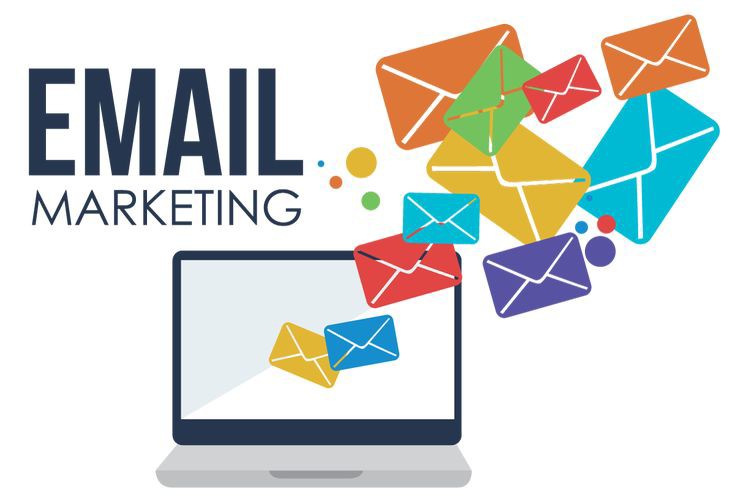Marketing KPIs (Key Performance Indicators) are the metrics and results that determine the progress towards achieving your marketing campaign objectives. Understanding these KPIs provides you with valuable insights into your business’ performance thus enabling data-driven decisions.
7 Email Marketing KPIs You Must Track
Email marketing is not about just hitting the send button and hoping for the best. It involves connecting with your audience and getting a return on your investment. This is where KPIs come into play. These key performance indicators will help you know what hits the mark and what misses it. With these, you don’t just throw money at a new marketing campaign. So, what email marketing KPIs must you track? Read on to find out.
1. Email Open Rate
The email open rate is among the most basic yet important KPIs. It refers to the percentage of people who open your emails. On average, a person in a professional setting receives around 121 emails every day. Depending on the industry, others may receive more emails. Research shows that only 21.5% of these emails are opened.
As an email marketing expert Tech Ai, you need to ensure that your email is among those that are opened. This is because a potential client will only engage with you and interact with your content if they open that particular email. Make sure you personalise your subject lines and emails to enhance your email open rate as it affects the entire business marketing campaign.
2. Bounce Rate
How many of your emails reach the intended audience? Bounce rates are all about deliverability. This KPI measures the percentage of emails that never make it to the recipient’s inboxes. It happens due to various reasons such as emailing invalid addresses, or temporary rejections.
One of the best ways to minimise your bounce rate is by employing a high-quality email validation tool. The tool works by verifying the credibility of an address before you can add it to your mailing list. This ensures that you maintain a healthy mailing list and ensure deliverability. Even better, it protects your senders’ reputation and increases your chances of landing in a recipient’s inbox instead of the spam.
3. Click-Through Rate
Commonly abbreviated as CTR, the click-through rate is a KPI that measures the percentage of recipients who will open links within your emails. It could be an image link, or a CTA (Call to Action) link directing them to the next step.
Having a high CTR shows that your emails drive the recipients to take the intended action. Like most websites, you only have a few seconds to impress a potential client. A recent report shows that people spend 13.4 seconds looking at email skimming for important and relevant information. If the CTAs are not well placed or the client experiences a hard time navigating, you are likely to lose them.
4. Conversion Rate
If you send out 1000 emails and get 200 sales from the campaign, your conversion rate will be 20%. This rate refers to the number of successful conversions (the people who took action and made a purchase) divided by the total number of emails you sent out.
By tracking your conversion rates, you can easily tell the effectiveness of the email marketing campaign as well as the overall user experience. For you to improve this rate, ensure that you test the email content and formats to know what works best. Don’t forget to focus on relevance and keep your contact (or CTA) information visible so customers know what to do as soon as they open your email.
5. Unsubscribe Rate
Knowing the number of people who unsubscribed to your content is another important KPI. While email marketing is one of the best forms of digital marketing, creating emails is arguably easy and this breeds fake addresses. Some people create these emails just because they want to access particular information but have no interest in receiving alerts or promotions. This is why they may unsubscribe when they start receiving promotional emails.
Checking this rate will give you insights into the people reading your emails and the kind of content they love. Provide a short questionnaire or an unsubscribing form where clients tell you why they are leaving. With this information, you can craft better content to suit their needs and keep future clients engaged.
6. Email Sharing/Forwarding Rate
Email sharing or forwarding is how you generate new leads or contacts for your business. Typically, the people in your email list are already in your database. Even though the primary focus is on the conversion, it doesn’t bring new customers on board.
However, when they share the email with a friend or on their social media platforms, you get access to new potential clients. Research shows that your customers are your biggest ambassadors. They are more likely to recommend you to their friends who may need your services or products if they like your brand.
As the name suggests, the email sharing or forwarding rate refers to the percentage of recipients who share your email with others. Besides bringing you more leads, it shows you how viral your content has gone.
7. Overall ROI
All these metrics come down to the return on investment (ROI). This measure shows how effective an email marketing campaign has been based on the generated revenue. This metric considers all the costs involved in running the campaign versus the total revenue collected.
To calculate it, divide the revenue generated by the total cost of the campaign. Tracking the overall ROI gives you insights into the true impact of your email marketing efforts on your business. It is a culmination of all the other KPIs that you have been tracking. It is advisable to find out more about email validation tools and always stay up to date.
Conclusion
As you can see, email marketing involves a lot of KPIs to help determine the effectiveness of a particular campaign. Every business must invest in the right tools to help accurately track KPIs as they are crucial to its success. With real-time insights to track the deliverability and effectiveness of your emails, you can take immediate action as soon as they arise and adjust your marketing strategies accordingly.












Leave a Reply